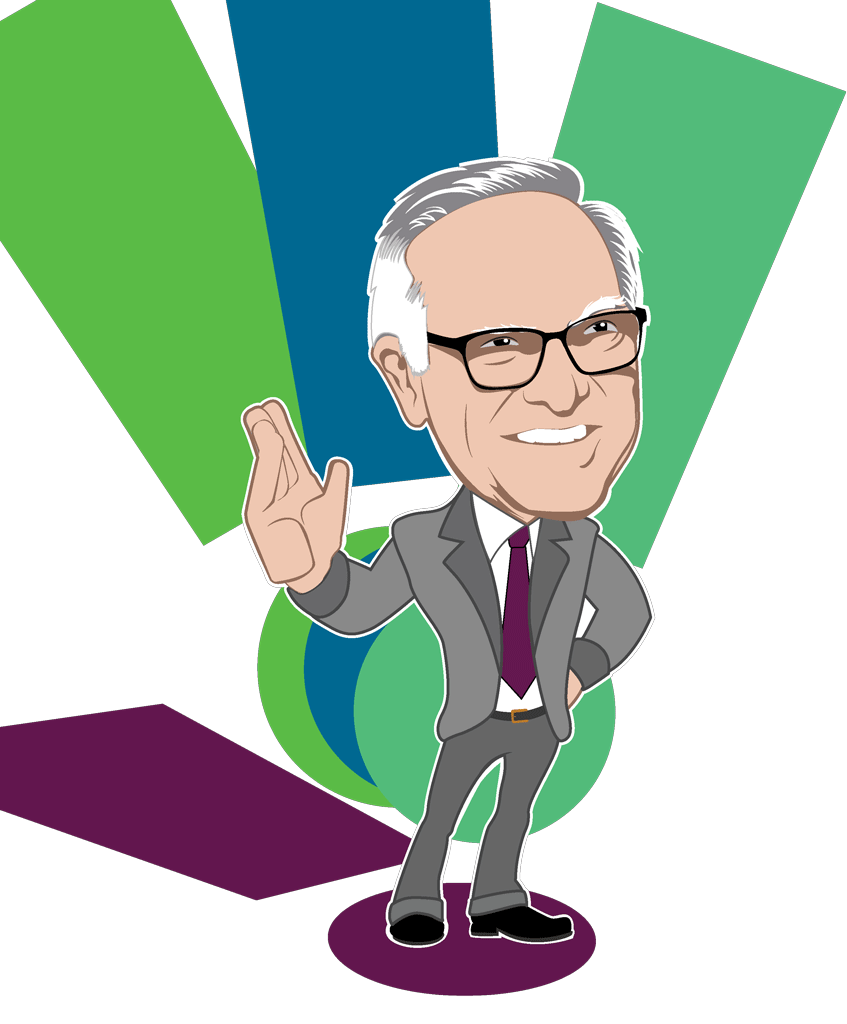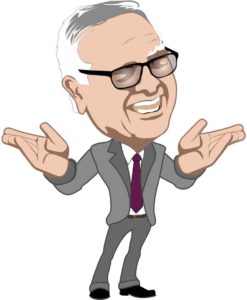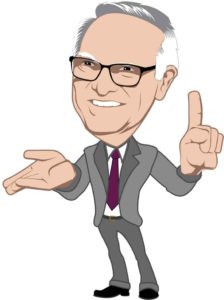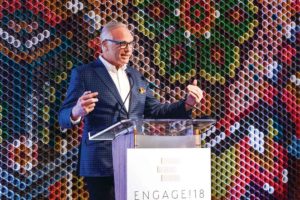
“An event is an ephemeral thing. What we do is give people the ability to see what other groups are doing at their events, see what works, and let them put their own spin on it. We’re like the dream machine for event planning.”

“We take content from our own events and bring it to life in print. We’ve found that people want it documented. They want this information down on paper to use in their own brainstorming sessions. The incredible thing about magazines is the serendipity of them. You flip the page, and someone says, ‘Oh, there’s an idea.'”

“We found that we had made the biggest mistake of our lives in canceling our print efforts because all of a sudden we were like everybody else. We didn’t have this moment-of-inspiration vehicle that you can take with you, portable-ized.”

“A magazine is the perfect use case for augmented reality. It combines the serendipity of the print magazine with the convenience of the digital screen. Get inspired and then use the power of the internet to go deeper.”

“You have that point when you say to yourself as a reader, ‘I want to find that item,’ or ‘I want to see what’s behind that data.’ With AR, you can provide this information readily. And it’s not expensive to do. It’s the future, I believe, of magazines.”


The Bash Is the Thing for David Adler
Interview with David Adler
David Adler, a self-professed “magazine junkie,” started his first print magazine at age 21. He has spent his entire career in the publishing industry and, in 2000, launched another project of his own: BizBash, an idea and resource marketplace for event organizers.
Temporarily bowing to conventional wisdom, Adler killed BizBash’s multiple magazines in favor of digital-only publishing. Two years later, he brought print back — this time, super-powered with augmented reality. In a sit-down, he told us why.
What is BizBash?
We cover the event industry. We have 200,000 event organizers coming to our website every month. They can’t get into other people’s events, so they come to us to get a “peek over the fence” at what other event organizers are doing. This sparks ideas for what they want to do at their own events.
An event is an ephemeral thing. What we do is give people the ability to see what other groups are doing at their events, see what works, and let them put their own spin on it. We do this through our own events, print magazine, website, and community. We’re like a dream machine for event planning.
What’s a BizBash event like?
We have three major trade shows around the country: New York in the fall, Florida in the spring, and LA in the summer — and we’re adding one in Washington D.C. in the summer. These events are the most fun you can ever have at a trade show.
Imagine walking down the aisles, and you’ve got a carpool karaoke booth where you can sit in a Maserati and create a video of yourself singing while driving this car. Or at the next booth, you’re tasting the most incredible hors d’oeuvres you’ve ever had in your life. In the next aisle over, you get a look at back-end technology solutions that help you plan your events. At another booth, you get handed a new cocktail from Bacardi because they’re trying to show event planners what they can serve at their events. And at the next, you see donuts being made and served with a whole new take, like on a dessert wall. It’s a blast. We give everyone the secret sauce for how to be a superstar in their own industry.
Is there a connection between your events and your print magazine?
We take content from our own events and bring it to life in print. We’ve found that people want it documented. They want this information down on paper to use in their own brainstorming sessions. It’s harder to brainstorm on a computer. The incredible thing about magazines is the serendipity of them. You flip the page, and someone says, “Oh, there’s an idea,” and then the room talks about it. “Well, maybe we can do this and add that twist to it.” It’s like sitting down with a coffee table book in your home; it delights the senses.
As this kind of tool of inspiration, our magazine issues never go out of date. They’re lasting products that people can pull from the shelf whenever they need to come up with an idea.
What happened when you folded your print magazine two years ago?
We found that we had made the biggest mistake of our lives in canceling our print efforts because all of a sudden we were like everybody else. We didn’t have this moment-of-inspiration vehicle that you can take with you, portable-ized — that opportunity for the serendipity impact that inspires you and your brand to create better events. We canceled our magazine after the finance geniuses told us, “If you ever want to build value for your company, you’ve got to get rid of print.” They were wrong.
I started BizBash in 2000, and by 2009, we had 54 editions of our magazines in various local markets, including Chicago, LA, Toronto, and D.C. Then in 2014, we went to one big national magazine with local content, which worked really well. And then in 2016, we decided, okay we’re going to make digital magazines because that’s what everybody is saying to do. The pickup was okay, but it was nowhere near the impact of having a print magazine getting into people’s mailboxes. And what we found is that people love our print brand. They tell me all the time, “I love BizBash because it delights the senses.” So we relaunched with one national magazine. We published the first issue in fall 2018, and we’re doing it three times a year with plans to increase the frequency.
Why did you decide to add augmented reality to the magazine?
I was at a GRAMMY event last year for will.i.am where he talked about his graphic comic book and how he had added augmented reality (AR) to it. AR turned the printed page into a virtual, digital screen. I went out and bought the comic book and downloaded the AR app, and I had this unbelievable moment of clarity. A magazine is the perfect use case for augmented reality. It combines the serendipity of the print magazine with the convenience of the digital screen. Get inspired and then use the power of the internet to go deeper.
Especially in the B2B world, this enables readers to get more data out of a page while not interfering with the reading experience. You have that point when you say to yourself as reader, “I want to find that item,” or “I want to get in touch with that person,” or “I want to see what’s behind that data.” With AR, you can provide this information readily. And it’s not expensive to do. It’s the future, I believe, of magazines. It’s going be part of the fabric of how a magazine works and is perceived. There will be a data overlays that give you more information.
We’re taking the AR journey; not everyone is using it yet. It’s like we’re in the era of the brick phone in the early cell phone days in that we’re just learning how to do it. You have to walk before you can run. We don’t charge anything additional for AR now. And we make it a modular experience that readers can experience if they want to. My feeling is that everybody will be eventually using it; it’s going to be like holding a pencil.
Was AR hard to implement?
We built this on our own. I went to Upwork, an online freelance directory; hired a gaming company; and told them my vision. These are the people who are experimenting with this kind of technology. We used our content management system and database, and created a system so we don’t have to customize every single ad. We templated it. We used our existing systems and materials, and they programmed the AR. I spent maybe $35,000 to develop the entire thing, and that’s relatively inexpensive — especially not knowing what we were doing and having to make a few mistakes along the way.
When readers hover their smartphones over our pages, they see the available features — from calling an advertiser to going to someone’s website to viewing a photo gallery for an event venue. In our relaunch issue, our cover prompts a video of me introducing the issue to readers.
You can hire custom augmented reality companies that will create incredibly high-end graphics for this, but I don’t believe that the utilitarian nature calls for that yet. I think we’re much more in the era of: Let’s do the basics right first, and then we can start putting pizazz in it. If you jump too much now, the expectations are set way too high. It’s sort of like, “Okay, the printed page turns into a digital page, and that’s all we’re trying to accomplish right now.” My philosophy is that you have to practice doing it right now in order to get it done well in the end. Just think of how magazines became better and better and better with smarter design, better type, better tools. It’s the same thing.
How are advertisers reacting?
They’re still responding. I think they love the idea. It’s a little bit of a chicken and egg thing. One reason we’re giving AR away for free now is that we’re experimenting with it. Advertisers want to see the results, and the usage is not there yet because the consumer is not quite there yet. We want to have the system down so that when the tipping point happens, we’re not starting from scratch. Now, advertisers are saying, “This is cool.” When it’s being used effectively, we’ll be able to say, “We have 1,000 downloads on this particular page.” We don’t have that yet. Eventually, this is going to be the way you measure engagement in print.
In terms of advertiser engagement, we went from no revenue for print, before our relaunch, to almost $350,000 in revenue with this first issue.
How are readers reacting?
I announced our relaunch and introduction of AR at our trade show in Los Angeles, and there was a standing ovation. It was unbelievable. I didn’t expect it. It was because our audience really, really likes the idea.
Here’s the thing: The act of looking for is a whole different experience than looking. On a computer, you’re looking for something. But people don’t always know what they’re looking for. They want to be inspired. They want to look around an entire page and get that “serendipity effect” of finding something that inspires them — some-thing they didn’t know to look for.
We are the destination for people to shop for everything related to events. Our readers look at every single ad, and they look at every picture in every single ad. Everybody is looking for something different, for ideas from everywhere. So you may think it’s an ad, but really it’s as much of an editorial piece as anything else in our magazine. In fact, that’s the difference between B2B and consumer magazines: The vendors and even the advertisers are part of the content that people are
looking to absorb. Our readers love the idea of being able to follow that ad a layer deeper to get more information.
Given that, do you publish native advertising products in the magazine?
We went through a period when content creation was a huge deal, and advertisers were sending us a lot of crap to publish. What we found is that if you make your customized content as high quality as your regular content, it actually will get listened to, watched, and read. So we’re being much more discriminating about the branded stories we include in the magazine. I think the people creating custom content know that just having an article with their name on doesn’t mean anything. It has to have impact.
In our launch issue, we joint-produced a paid campaign called “First Impressions.” It featured a series of movers and shakers in our industry, using oversized black-and-white photography. I believe, by the way, that one of the unique selling proposition in magazines is very high-impact photography. The campaign focused on the idea that first impressions are very important in our industry. The package included an ad campaign; a podcast on each featured individual; and the 12-page First Impressions branded print content. It was complete surround-sound — content delivered across all platforms. The advertiser was thrilled and has signed on for another campaign.
What’s next for BizBash?
Content is free everywhere. What is not accessible to everyone is being in the room with the people they want to be in the room with. That’s the power of events when done well. So we’re looking to create more face to face, high-touch affinity groups of planners and producers in different niches so they can talk to and they feed off each other.
These will include the top players in a market. We’ll coordinate events where they can get together. Everybody in business today is drinking from a fire hose, and they need somebody to say, “Hey, if you come to this tasting meal or wine tasting, you’re going to be inspired to create better events because inspiration fuels experience.” What we want to do is inspire people to do what they do better.
What would you say to other publishers?
Don’t be a follower. Yes, try something like AR, but don’t necessarily do it like someone else is doing it. It has to fit your market. It has to have your twist on it. We’re all sitting here in little rowboats in this same pond, and the current is going crazy. Nobody really knows what’s going to work. You just have to try things. And the innovative people will stumble on what works.
David Adler is founder and CEO at BizBash. A lifelong media executive, David was previously vice president of corporate communications at PRIMEDIA and Macmillan Publishers. In the early days of his career, he founded, operated, and sold a society and political magazine for the nation’s capital called Washington Dossier. He has been an advisor to the State Department in areas of protocol and events. Connect at adler@pagesthemagazine.com.


